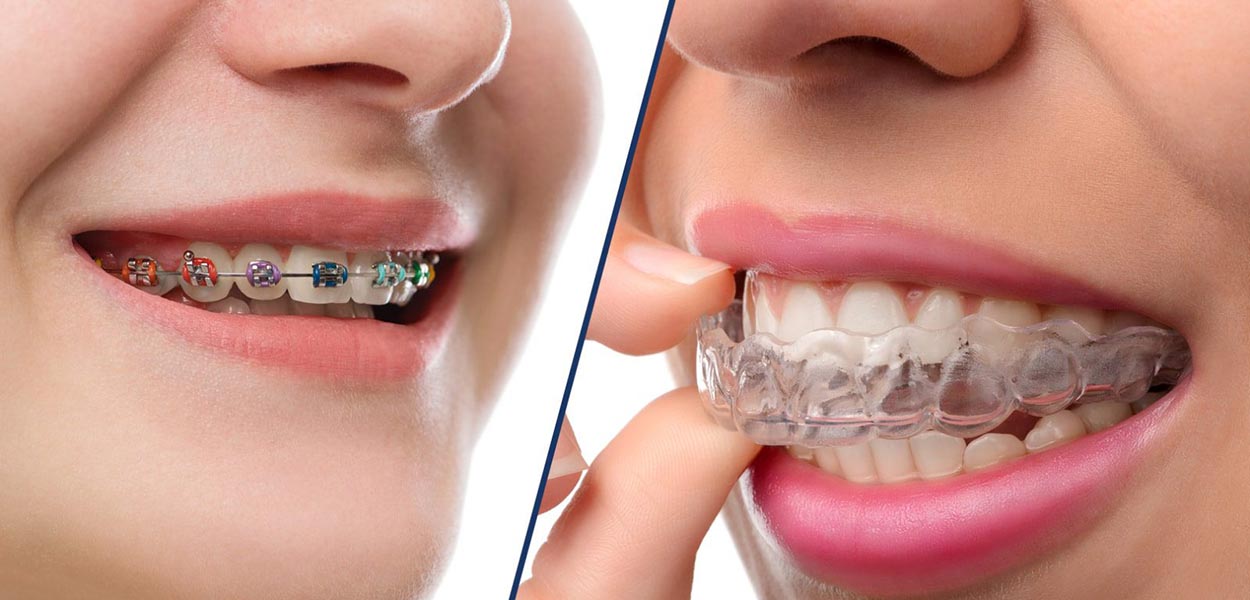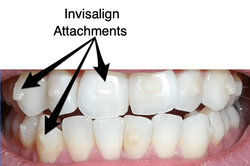Success Stories: How Invisalign Changed Lives and Enhanced Confidence
Success Stories: How Invisalign Changed Lives and Enhanced Confidence
Blog Article
Invisalign vs. Conventional Braces: Which Choice Is Right for You?
When considering orthodontic therapy, the selection in between Invisalign and conventional dental braces offers several crucial variables that warrant careful evaluation. Invisalign supplies a very discreet option with detachable aligners, while conventional dental braces offer an extra noticeable yet efficient option for extreme misalignment. Each alternative incorporates distinctive advantages and downsides related to looks, convenience, therapy duration, and cost. Comprehending these nuances is crucial for making a notified choice that lines up with your personal choices and way of living. The inquiry continues to be: which alternative will finest fulfill your orthodontic demands and expectations?
Overview of Therapy Choices

In comparison, traditional dental braces contain steel braces and wires that are adhered to the teeth. This method applies constant pressure with time to accomplish placement. While effective for complicated orthodontic concerns, traditional braces require normal visits for changes and can position obstacles in preserving dental hygiene because of the difficulty of cleaning about cables and brackets.
Both alternatives have their qualities, and the option often depends upon certain oral conditions, way of life choices, and individual conformity. Ultimately, consulting an orthodontic specialist is critical for identifying one of the most appropriate treatment strategy customized to specific demands. Comprehending the nuances of each choice can substantially influence the overall success of orthodontic treatment.
Visual Considerations
A significant variable influencing the selection between Invisalign and traditional braces is the visual appeal each treatment uses. Invisalign aligners are crafted from clear plastic, making them practically invisible when used.
In comparison, conventional braces contain steel braces and cables, which can be more noticeable. While developments in orthodontic technology have resulted in the development of smaller sized braces and tinted elastics, conventional braces still preserve a more conspicuous profile. For some people, the exposure of braces might discourage them from looking for necessary therapy.
Inevitably, the option in between Invisalign and conventional dental braces might rest on individual preferences relating to looks. Patients who focus on discretion commonly favor Invisalign, while those who are much less concerned regarding presence may select traditional braces. Understanding the visual effects of each option is vital for making an informed choice that aligns with one's way of life and preferences.
Convenience and Convenience

In regards to benefit, Invisalign aligners are removable, enabling people to appreciate their preferred foods without restriction and keep ideal oral health. Brushing and flossing are simplified, as the aligners can be obtained throughout these routines, whereas typical read the article dental braces require careful maneuvering around wires and braces.
In contrast, typical braces demand routine modifications, making them less practical for those with busy routines. On the whole, the convenience and ease of Invisalign make it an enticing option for many people seeking orthodontic therapy.
Treatment Duration and Performance
While both Invisalign and standard braces are efficient in dealing with dental misalignments, the period of therapy can vary considerably between the two options. Generally, Invisalign treatment can take anywhere from 12 to 18 months, relying on the complexity of the case. The clear aligners work by slowly changing teeth right into their desired settings, and routine follow-ups with an orthodontist aid make certain progress stays on the right track.
In comparison, traditional braces frequently call for a longer dedication, generally ranging from 18 months to three years. This is because of their fixed nature and making use of braces and cables, which can be more efficient for complex cases and severe imbalances (Invisalign). The therapy efficiency of standard braces is well-documented, as they permit precise adjustments and better control over tooth activity
Inevitably, the option between Invisalign and conventional braces may pivot on both the awaited therapy duration and the specific oral concerns handy. Consulting with an orthodontist is critical, as they can give customized referrals based upon private requirements, making sure the selected method straightens with preferred results and timeframes.
Expense Comparison and Insurance Options
Cost plays a significant duty in the decision-making procedure for individuals thinking about orthodontic therapy, whether selecting Invisalign or typical dental braces. Generally, the price of Invisalign arrays from $3,000 to $8,000, while conventional dental braces commonly cost between $2,000 and $6,000. Factors affecting these prices consist of the intricacy of the situation, the duration of treatment, and geographical location.
Lots of dental insurance coverage strategies provide partial protection for orthodontic therapies, yet the specifics can differ widely. Normally, typical braces may be much more often covered by insurance policy strategies compared to Invisalign, which some insurance providers classify as an aesthetic treatment.
In addition, numerous orthodontic practices provide versatile settlement strategies, making both therapy options much more easily accessible. People should ask about prospective funding choices and price cuts for ahead of time payments. Assessing the overall price, including insurance coverage benefits and settlement strategies, is vital for making an educated choice that lines up with both visual choices and budget considerations.

Final Thought
In summary, the option between Invisalign and standard braces depends This Site upon several elements, including aesthetic preferences, comfort, treatment duration, and cost. Invisalign offers a discreet, removable option that helps with oral hygiene and nutritional flexibility, while conventional braces might be preferable for intricate oral concerns and often come at a lower rate factor. Ultimately, examination with an orthodontist is important to assess individual scenarios and identify the most suitable therapy choice for accomplishing ideal oral alignment.
When considering orthodontic treatment, the selection in between Invisalign and standard braces presents numerous crucial elements that merit careful evaluation.Contrasting Invisalign and standard dental braces reveals distinct treatment options for orthodontic correction.While both Invisalign and conventional braces are reliable in fixing dental misalignments, the period of treatment can differ significantly in between the 2 alternatives.Expense plays a substantial duty in the decision-making process for people taking into consideration orthodontic therapy, whether choosing for Invisalign or conventional braces.In recap, the selection between Invisalign and standard dental braces hinges on several YOURURL.com variables, including aesthetic choices, convenience, treatment duration, and expense.
Report this page